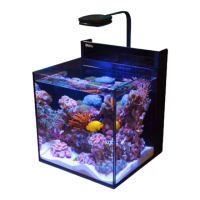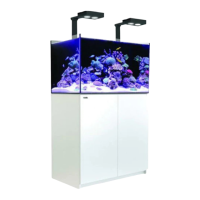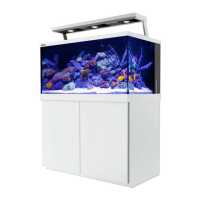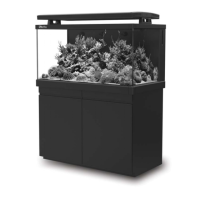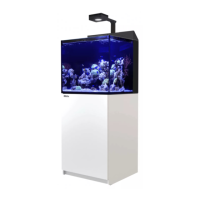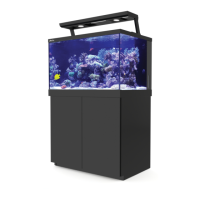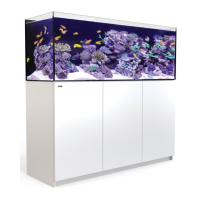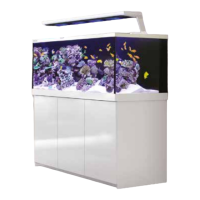Red Sea MAX User Manual
1.
2.
3.
the type of rock you choose, but it should occupy at least forty
percent of the tank volume.
Your rock's viability when you receive it depends on several
factors: harvesting, shipping and pre-purchase maintenance.
Unfortunately, much of the live rock available to hobbyists
requires a curing process to rid it of the organisms that died
during shipping and to reseed it with living beneficial ones.
Signs of whitish-gray film on newly purchased rocks indicate
that the live organisms have died and must be cured or
cycled. Your live rock must be fully cured before you can add
any fish or invertebrates to the aquarium. We therefore highly
recommend purchasing your live rock from a reputable dealer,
or to perform the cycle process yourself inside MAX.
If you have purchased cured live rocks, or live rocks from a
mature aquarium, you can skip this section.
Cycle
The curing process, which initiates the biological processes,
such as the nitrogen cycle and the recolonization of
microorganisms, typically takes 1-4 weeks depending on the
type of rock and the method used. Although many organisms
die during transport, much of the fauna does survive. During
the cycling period the ammonia levels rise rapidly as bacteria
process the dead organisms. The elevated ammonia levels can
cause even more organisms to die, which produces even more
ammonia. The populations of nitrifying and denitrifying
bacteria grow accordingly, eventually processing all the
ammonia and nitrite, reducing them to undetectable levels.
To initiate and boost the seeding of nitrifying and denitrifying
bacteria in the bio-filter media and live rocks, the Red Sea
MAX Starter Kit (optional purchase) includes Red Sea NitroBac.
This specially designed formula contains a concentrated blend
of nitrifying bacteria that quickly and effectively stabilize the
nitrification process. You can add it directly to the aquarium
during the initial setup and add 50 ml every week during the
cycle period.
To cure the live rocks
Wash all the rocks with saltwater and remove any grayish
or slimy areas, which harbor decaying microorganisms.
This will help minimize ammonia levels.
Remove any signs of algae.
Place the live rock in the tank. Ensure that only small areas
are in contact with the tank bottom or other rocks. Try to
build as many caves as possible such that the larger rocks
sit on the bottom and the smaller ones on top. It is
important to build a stable structure that provides the rock
with good water circulation. Do not block the pump outlets
or filtration chamber opening.
Figure 31: Water circulation
21
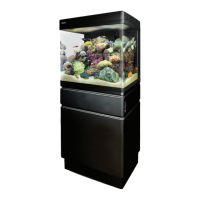
